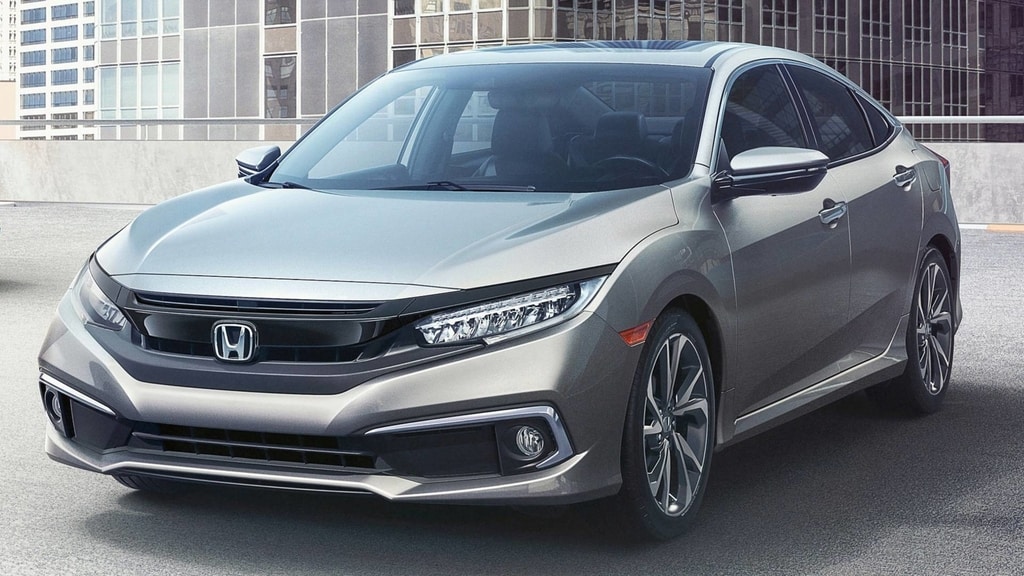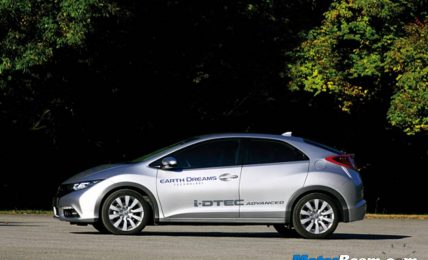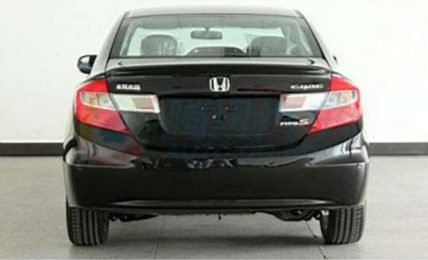Like the exteriors, the cabin of the Civic is upmarket and premium
Interiors – The new Honda Civic continues to be a low-slung car so getting in is not as easy as say in the Skoda Octavia. But once inside, the pleasing beige with black theme looks premium and makes the cabin feel airy. The design is not as radical as the previous Civic but it looks refreshing in a Honda. The dashboard is slightly tilted towards the driver, the steering is chunky to hold and oh, yes you get the digital instrument cluster from the CR-V. The cabin looks driver-focussed and the low seating position, although not to everyone’s fancy, compliments the feeling.
The quality of materials used is good but could have been better at some places
The driver-focused dashboard and low-slung seats offers a sporty driving feel
The quality of materials at large is good and we particularly liked the stitching on the leather seats which looks like it belongs to a more expensive car. The plastics at some places could’ve been better. Where the Civic’s interior falls short is when it comes to ergonomics which is surprising considering the user-friendly interiors of most of their cars. The ports for HDMI, USB and the 12V charging socket are hard to reach and to access the USB port for the rear, one has to get into below the front centre armrest to access it. Odd.
The infotainment system is smooth to operate and the MID shows a lot of information
The Civic comes with the necessary equipment which seems to be at par with the rivals. You get a 7.0-inch touchscreen infotainment display with Apple CarPlay and Android Auto, an eight-way power adjustable driver’s seat and a smart key (which can be used to turn the engine on and off, operate the sunroof and power windows and open the boot) are standard. Other kit on the new Civic includes push-button start, automatic wipers and a fully-digital 7.0-inch MID in the instrument cluster that displays information including access to a connected smartphone’s phone book, call history and music, along with average fuel efficiency and the distance to empty.
The rear seats lack headroom and legroom and is best suited for two passengers
The rear seat of the Honda Civic lacks space & leaves a lot to be desired
The rear seats of the Civic are a tad low and that is done intentionally to liberate more headroom in a car with a sloping roofline. This makes ingress and egress difficult particularly for the elderly who are likely to occupy the back seats all the time. When you sit in them, you don’t get the sense of space that you expect from a D-segment sedan. In fact, the City seems to offer more space. The legroom is adequate but no more and the headroom, though not very tight is still scarce. The hump of the middle seat is accentuated making it best for two and not three. The thigh support is average making long drives a bit tedious. It is surprising because Honda has always been the champion of carving out more space in a compact footprint.




